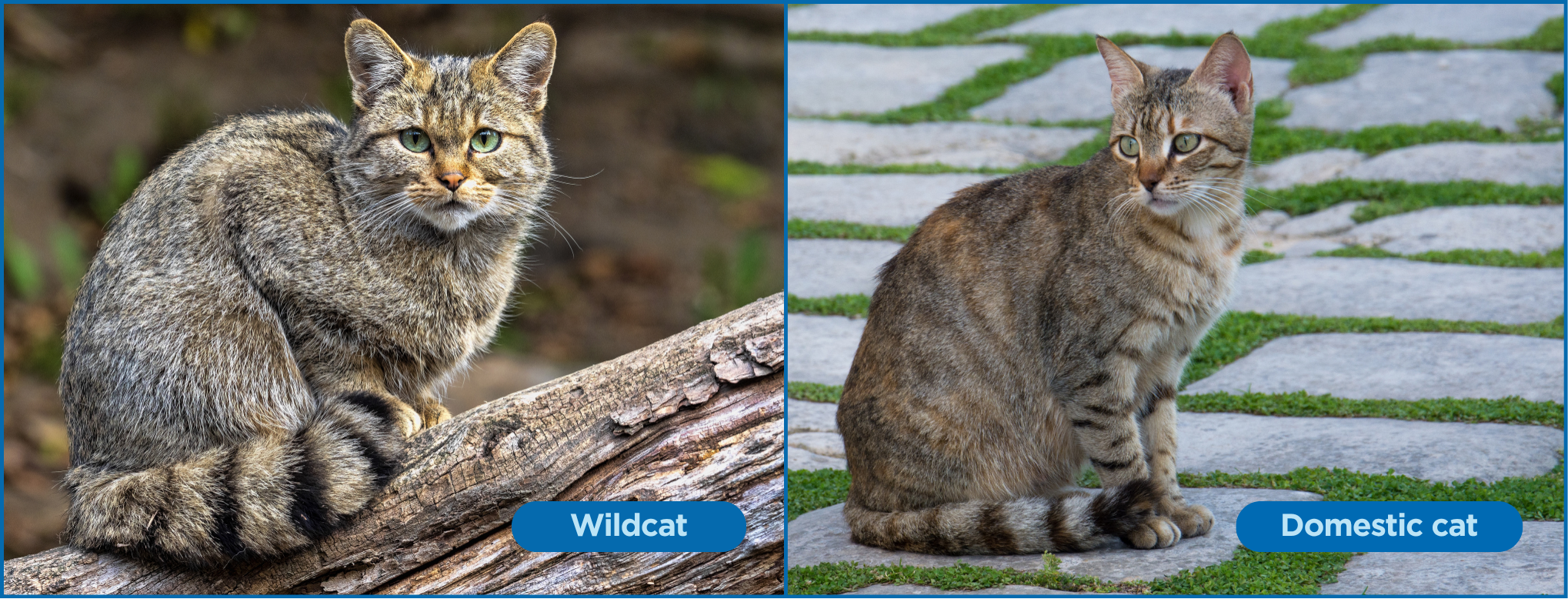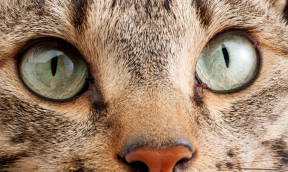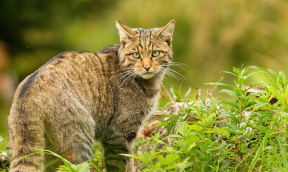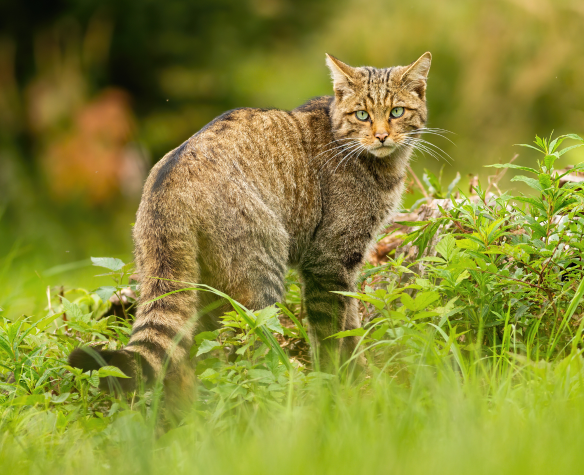
Everything you need to know about wildcats (identification)
CONTENTS :
- What are the characteristics of a wildcat?
- Can wildcats and domestic cats reproduce?
- Why can't you domesticate a wildcat?
- How do you protect a wildcat?
- How do you identify a stray cat?
- How do you adopt a stray cat?
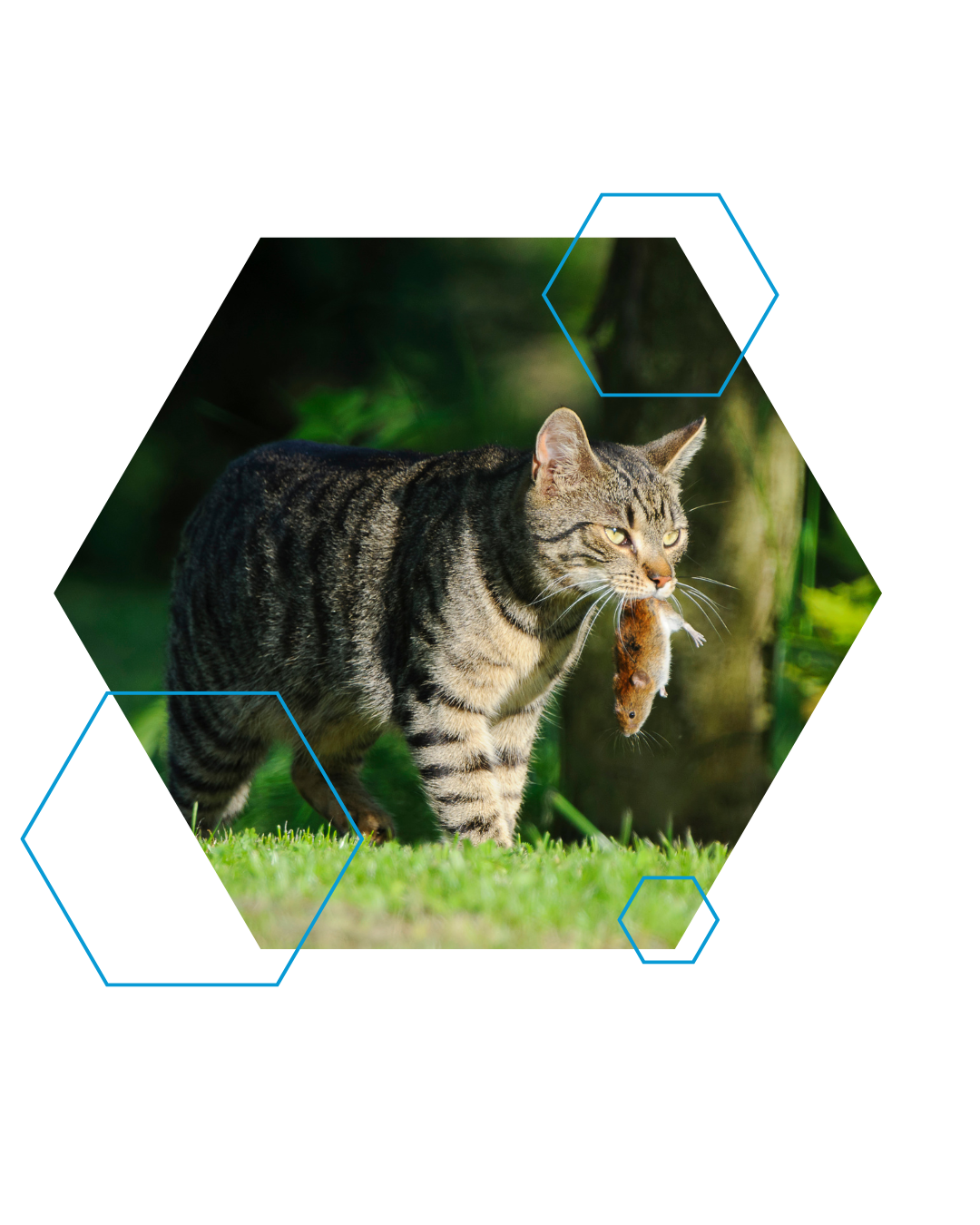
Before trying to help a feline spotted in the wild, find out who you're dealing with. Not all free-roaming cats are abandoned animals. Some, like the European wildcat, live entirely in the wild and have no place in our homes. Conversely, a stray cat can sometimes be taken in, cared for and even adopted. Francodex explains how to take care of all types of animals.
What is a wildcat?
The European wildcat (Felis silvestris silvestris) is a 100% wild species, protected and distinct from the domestic cat. Unlike the feral or stray cat, it has never been domesticated and naturally shuns any human presence.
Solitary, nocturnal and very inconspicuous, it lives in the great forests of Europe, far from habitation. They don't meow, they don't beg and they remain invisible to most of us.
Its survival is now threatened by the destruction of its habitat and hybridisation with domestic cats.
The wildcat’s protection: the wildcat is protected by the ministerial decree of 17 April 1981, as amended, which establishes the list of protected mammals in France. It is strictly forbidden to capture, injure, kill, transport or hold it, whether alive or dead. The wildcat is also protected at European level by the Bern Convention (1979) on the conservation of European wildlife and natural habitats. Finally, as an indigenous wild species, it is also covered by the EU Habitats Directive (Directive 92/43/EEC), which requires Member States to ensure that its populations are maintained or restored to a favourable conservation status.
What are the characteristics of a wildcat?
The European wildcat is a mammal that is essential to balancing forest ecosystems.
Wildcat identity sheet:
- It has a robust silhouette and a thick coat;
- It measures between 45 and 80 cm in length, with a bushy tail of 25 to 40 cm;
- It generally weighs between 3 and 7 kg, males being larger than females;
- Its coat is grey-brown, with well-defined dark stripes on the back and flanks;
- The tail, ringed with 2 to 3 black stripes, ends in a rounded black tip, an essential feature for identification;
- Its eyes are yellow to green in colour, and are large and expressive;
- Its ears are short and rounded.
Wildcats are active at dusk and during the night, although their activity can vary according to the season and environmental conditions.
Territorial and solitary, it travels several kilometres every day to hunt, mainly small mammals such as rodents, as well as birds, reptiles and occasionally amphibians.
Its preferred habitat is dense, undisturbed forest, where it can find natural shelters such as hollow stumps or abandoned burrows.
🐈 Differences between a wildcat, a feral cat and a stray cat: the wildcat is a non-domesticated species, living exclusively in forests. Feral cats are domestic cats that have returned to the wild. A stray cat is an abandoned or lost domestic cat, often used to humans. Only the last two can be approached or adopted. The wildcat, on the other hand, remains fierce and independent.
Can wildcats and domestic cats reproduce?
Yes, wildcats and domestic cats can reproduce, which is a real genetic threat. The two species are inter-fertile, meaning that their offspring are fertile and often difficult to differentiate physically.
This phenomenon of hybridisation is gradually diluting the wild cat's genetic heritage. “Pure” individuals are becoming rare or even undetectable without DNA analysis.
This situation complicates conservation programmes and weakens the species in the long term.
Threat level of the wildcat: in France, the species is locally endangered, although not on the national red list. It is rare and fragile, and is declining in several regions, notably due to hybridisation with domestic cats. At European level, the wildcat is classified as "Least Concern" (LC) on the IUCN Red List, but certain sub-populations are threatened, mainly in Scotland, central Europe and eastern France.
Why can't you domesticate a wildcat?
As you have understood, wildcats cannot be domesticated.
Even when they are young in a litter, they are still fierce, unpredictable and solitary.
Unlike feral cats, which can sometimes readapt to humans, wildcats do not establish any lasting social ties with humans.
This behaviour remains its greatest strength in protecting its species.
What's more, any attempt to tame an animal causes intense stress.
How do you protect a wildcat?
Protecting wildcats starts with the wise decision to leave them alone.
If you live on the edge of a woodland, protecting feral cat populations means restricting the impact of domestic cats on their territory.
This objective involves the systematic sterilisation of stray or pet cats that roam freely in the wild, in order to prevent hybridisation.
On a larger scale, it is essential to preserve dense forest areas, which are natural refuges for wildcats. If you live in a region where wildcats are present, you will easily find a protection association to support.
💡 If you think you've spotted an injured or distressed wildcat, here's how to help:
- note the exact location, if possible with GPS coordinates or a clear landmark;
- don't try to catch it or lock it up;
- quickly contact a wildlife care centre, a local naturalist association such as SFEPM (the French Society for the Study and Protection of Mammals) or the French Office for Biodiversity (OFB).
How do you identify a stray cat?
Unlike wildcats, stray cats can be approached, rescued and potentially re-adopted. But first of all, you need to check whether it belongs to anyone.
You can already see if it is sociable and have it examined by a vet. A microchip or tattoo can help when it comes to contacting its possible owners.
In the meantime, if you take in a stray cat, even for a few hours, place it in a small area where it will not be disturbed by humans or other animals.
You can use an environmental anti-stress spray that has soothing properties for animals under intense stress.
If you take in a very dirty animal that seems discomforted by its condition or is unable to groom itself, try to help it by gently using multi-purpose cleaning wipes. Give it something to eat and drink, and don't do anything more until you have consulted a vet.
Finally, if it cannot be identified or if you are unable to keep it at home, contact an association or shelter that can take it in.
Or are you thinking of adopting it?
How do you adopt a stray cat?
Adopting a stray cat is a generous act, but one that requires commitment, patience and preparation.
Unlike a wildcat, a stray cat has at some point in its life experienced human contact. With time, it can become sociable again and adapt to a new home. However, restoring its confidence may prove difficult.
Before letting a stray cat into your home, a visit to the vet is essential to:
- confirm that it is a stray or feral;
- check its state of health;
- identify possible diseases;
- update its vaccinations;
- administer a suitable deworming and flea treatment;
- sterilise it;
- receive valuable advice for the future!
Sterilisation helps to avoid certain undesirable behaviours, such as nocturnal meowing, marking and running away, while preventing unwanted reproduction.
While you're waiting to sterilise it, you can use the Elimin'Urine solution, which helps prevent the recurrence of markings and destroys the smell of urine.
When you get home, give your new companion a quiet place to settle in:
- separate room;
- comfortable bed;
- hiding places;
- litter tray;
- bowls,
To make it easier for them to adapt, a catnip spray will make even the most recalcitrant tomcats feel good and help them get used to a new place to live. You can also add an anti-stress oral solution to the food you offer. Its high palatability can encourage it to eat more quickly.
It can take several weeks for a stray cat to feel truly at home. The important thing is to:
- respect the animal's rhythm;
- do not force it into contact;
- build a relationship with consistency and gentleness.
To ease this period of adaptation and create a bond with a fearful cat, offer it reward treats or anti-stress treats when it approaches.
Now you know that a wildcat will never be able to lounge around on your sofa, purring. However, you could make someone happy by restoring the confidence of an animal whose daily life has not always been easy.
Article written with the assistance of
Dr Marie Marossero, veterinary surgeon

